Omówienie
Rust to nowoczesny język programowania systemowego, który koncentruje się na wydajności i bezpieczeństwie, zwłaszcza bezpieczeństwie pamięci. Rust odgrywa coraz większą rolę w ekosystemie Androida jako bezpieczniejsza alternatywa dla C/C++ w przypadku tworzenia kluczowych komponentów systemu, zapewniająca większe bezpieczeństwo i stabilność.
Na tej stronie znajdziesz instrukcje konfigurowania Android Studio na potrzeby platformy (ASfP), aby obsługiwać programowanie w Rust w projektach Android Open Source Project (AOSP).
Wymagania wstępne
- ASfP zainstalowany: sprawdź, czy ASfP jest zainstalowany i działa.
- Płatność na platformie: na komputerze musisz mieć działającą płatność na platformie AOSP.
Włączanie obsługi języka Rust
Oto instrukcja krok po kroku, jak włączyć obsługę języka Rust w projekcie ASfP:
Włącz Rusta
- Podczas tworzenia nowego projektu w kreatorze konfiguracji po prostu zaznacz pole Rust:
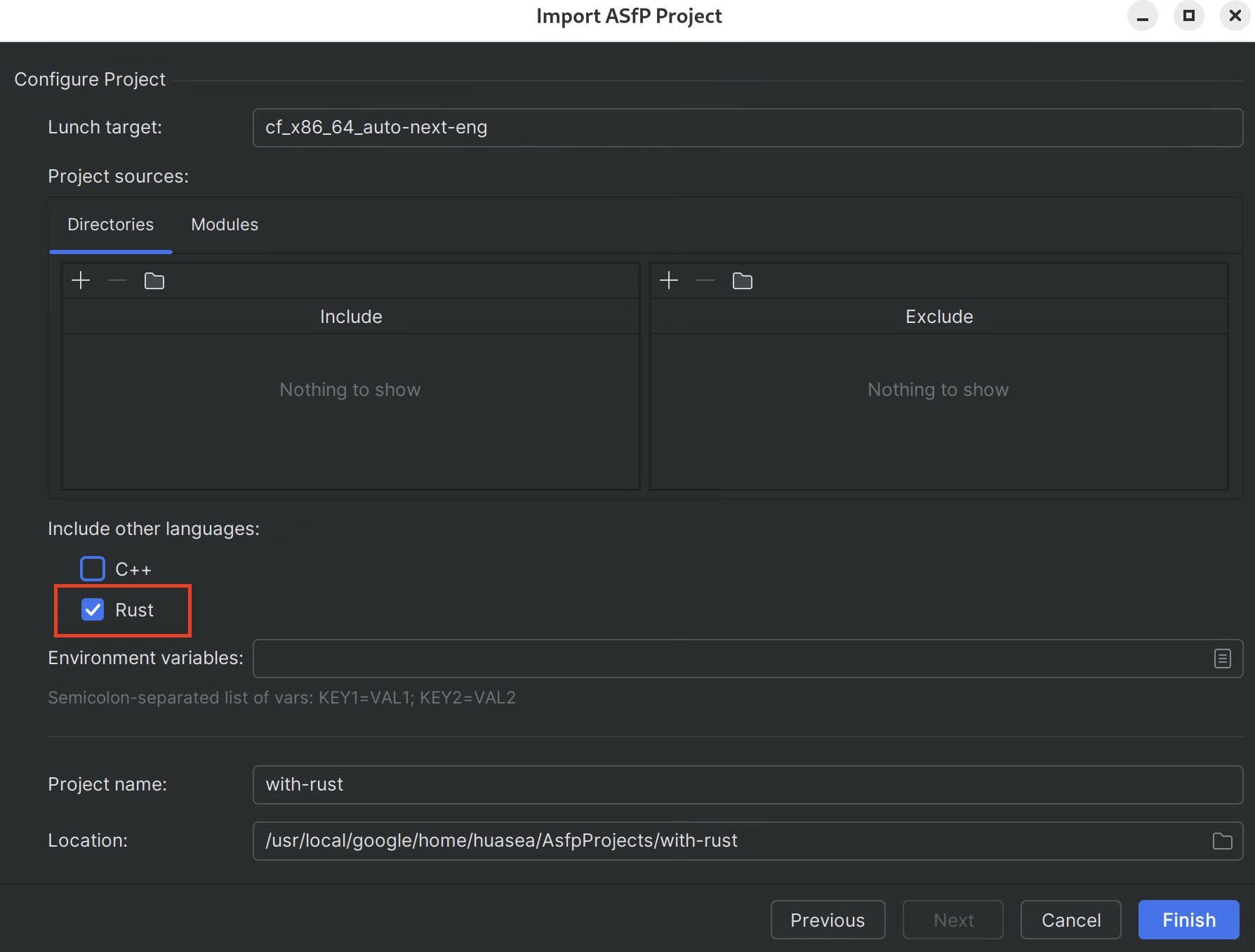
Pole wyboru Rust w kreatorze konfiguracji nowego projektu. - W przypadku istniejących projektów otwórz konfigurację
.asfp-projecti dodajrustdoother_languages:
other_languages: - cpp - rust ``` <figure> <img src="/studio/platform/images/1-modify_asfp_project_languages.png" alt="Modifying the .asfp-project file to add rust to other_languages" class="screenshot"> <figcaption>Adding Rust support in the <code>.asfp-project</code> file.</figcaption> </figure>
Synchronizowanie projektu:
- Po wykonaniu powyższych czynności musisz wywołać synchronizację projektu, aby upewnić się, że wszystkie zmiany zostały zastosowane, a IDE rozpoznaje projekt Rust: kliknij File > Sync Project (Plik > Synchronizuj projekt).
Sprawdzanie powodzenia
Po wykonaniu tych czynności:
W widoku projektu (w sekcji źródłowej iml) powinien pojawić się tekst
rust-project.json. Ten plik jest generowany przez Soong podczas analizy i łączony symbolicznie z głównym katalogiem repozytorium, co jest niezbędne, aby LSP mogło świadczyć usługi językowe. NIE edytuj tego pliku bezpośrednio. Zamiast tego ponownie zsynchronizuj go, aby Soong mógł go obsłużyć.Przypominamy, że w konfiguracji
.asfp-projectw sekcjiother_languagesmusi znajdować się adresrust.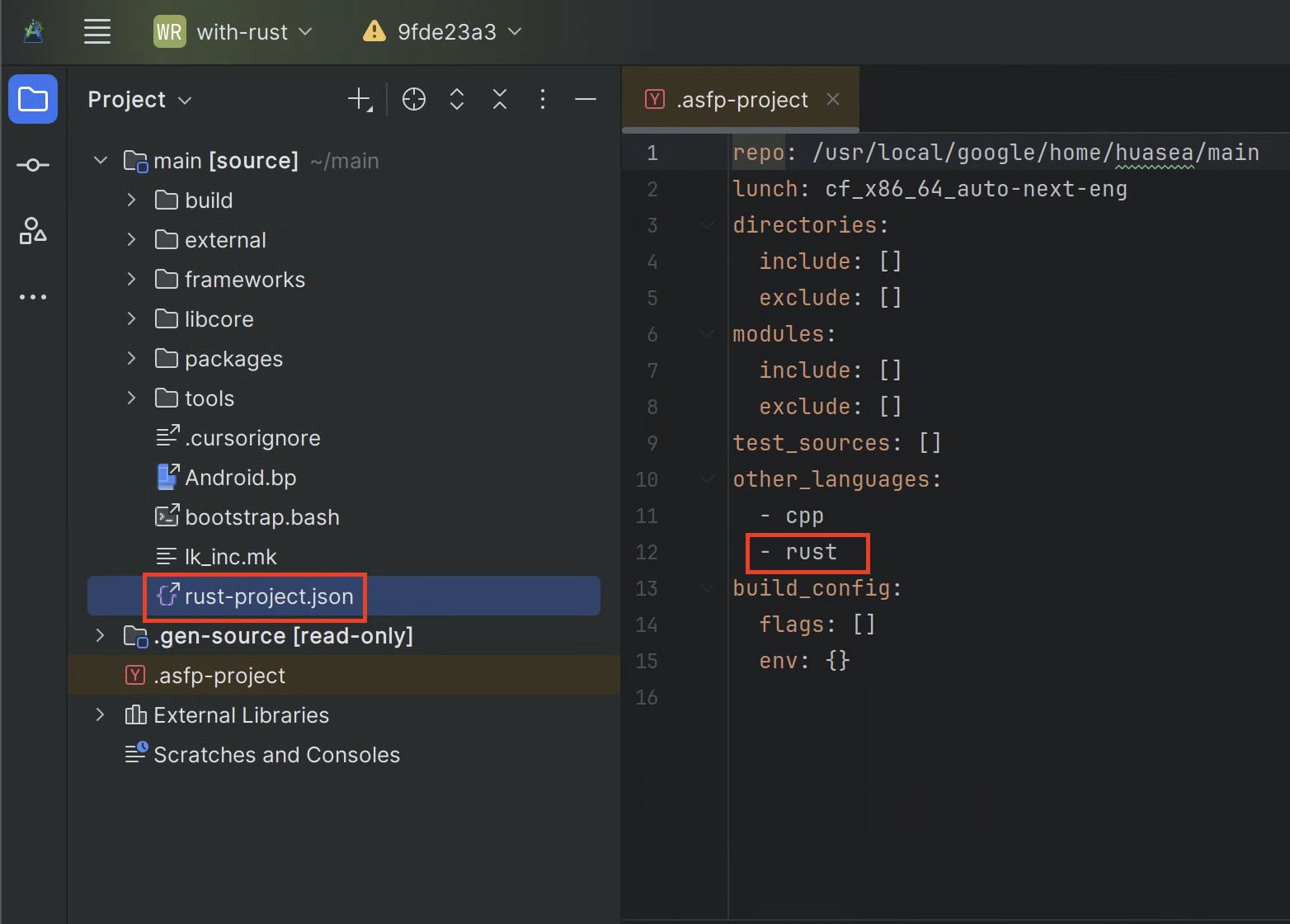
Sprawdź, czy wygenerowano element rust-project.json.W IDE powinny być włączone funkcje specyficzne dla języka Rust (opisane i pokazane poniżej).
Najważniejsze funkcje IDE Rust
Uzupełnianie kodu: otrzymuj inteligentne sugestie dotyczące kodu w języku Rust, w tym elementy z innych modułów.
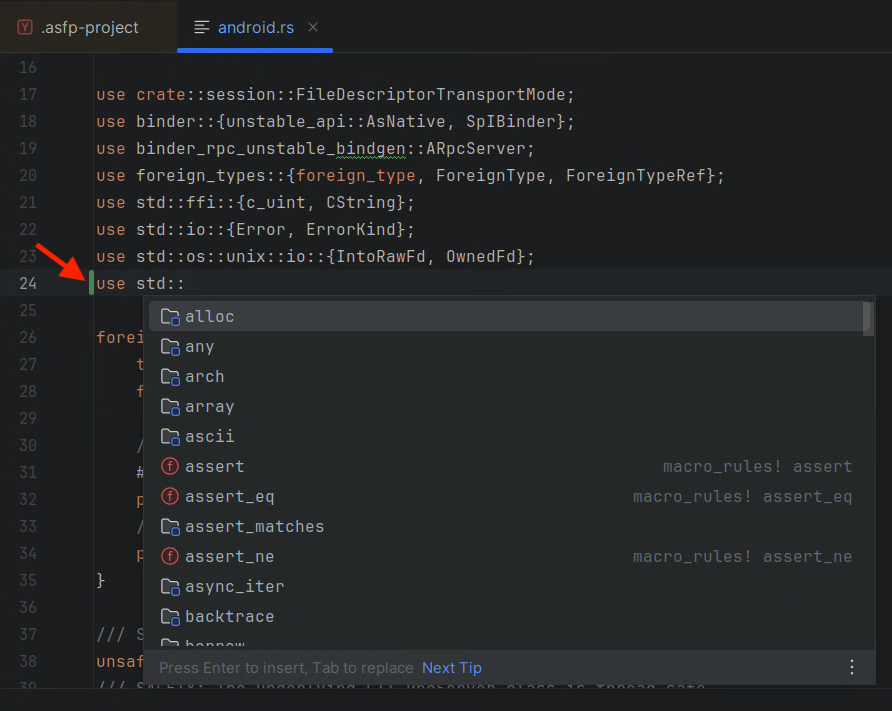
Autouzupełnianie kodu z sugestiami elementów z innego modułu Rust. Nawigacja: szybko przechodź do definicji i znajduj użycia symboli języka Rust w projekcie.
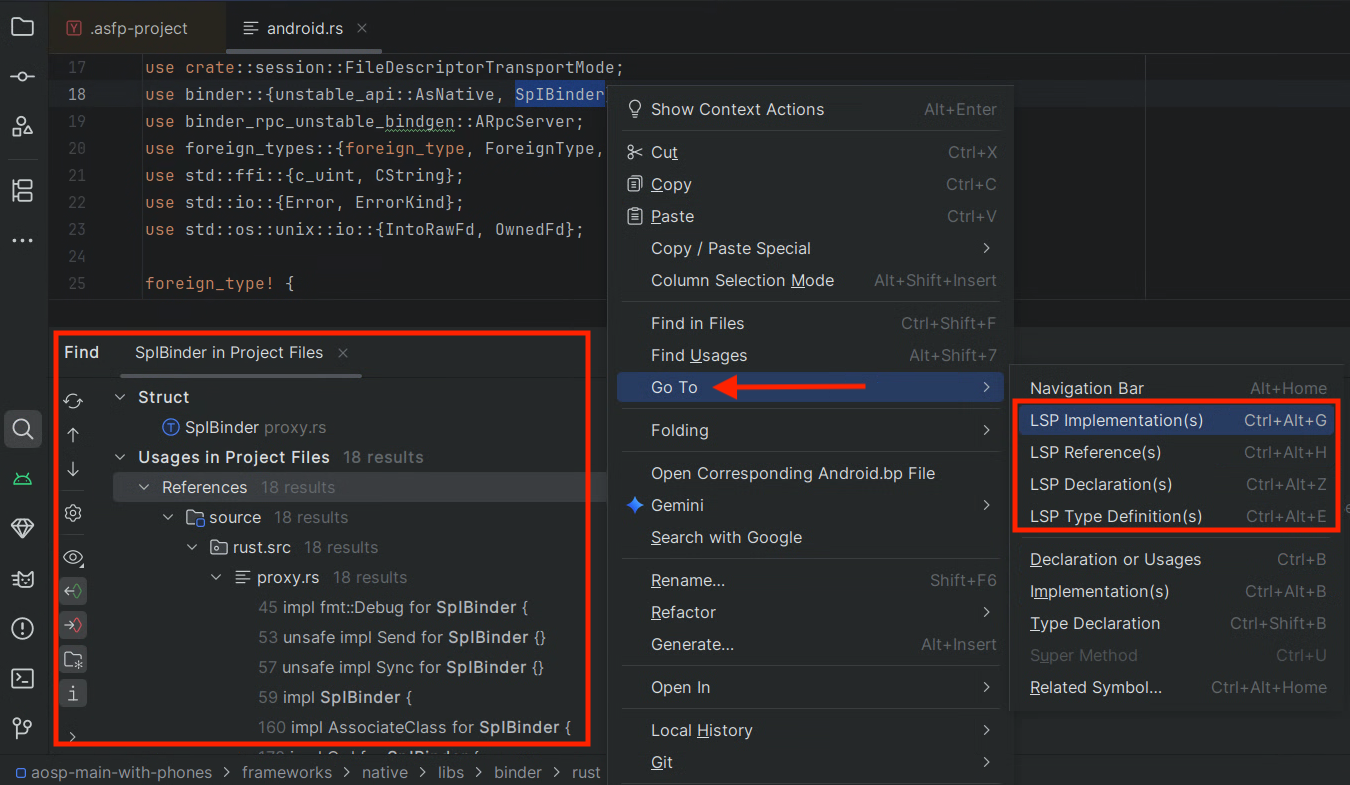
Przechodzenie do definicji symbolu Rust. 
Znajdowanie wszystkich zastosowań symbolu Rust. Etykietki: najeżdżaj kursorem na symbole, aby wyświetlić informacje o typie i dokumentację.
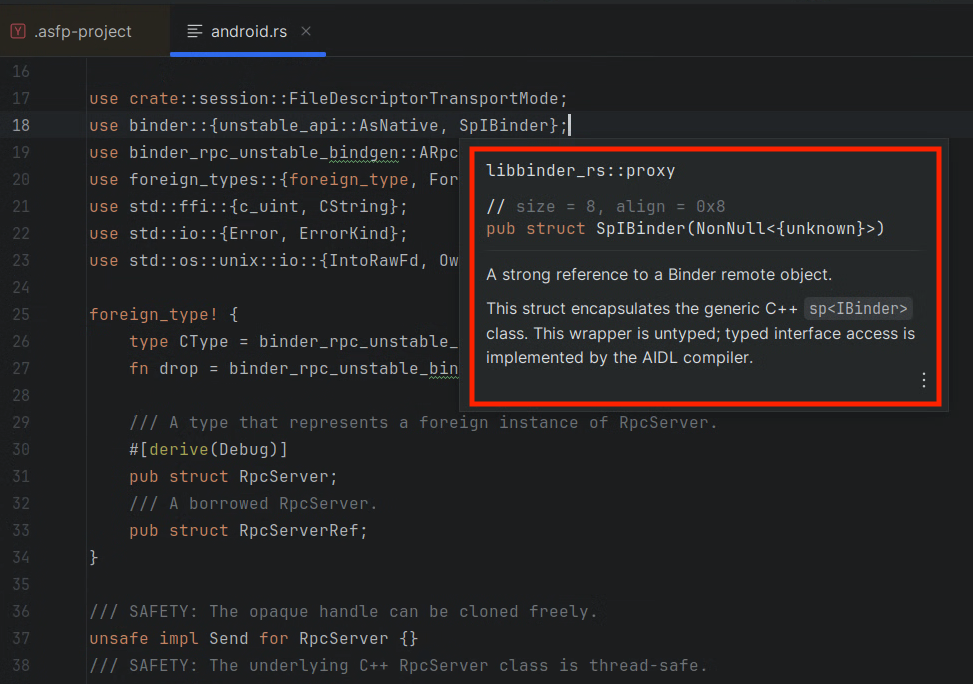
Etykietka z informacjami o typie symbolu Rust z innego modułu. Wskazówki wstawiane: wyświetlaj informacje o typie i inne wskazówki kontekstowe bezpośrednio w edytorze.
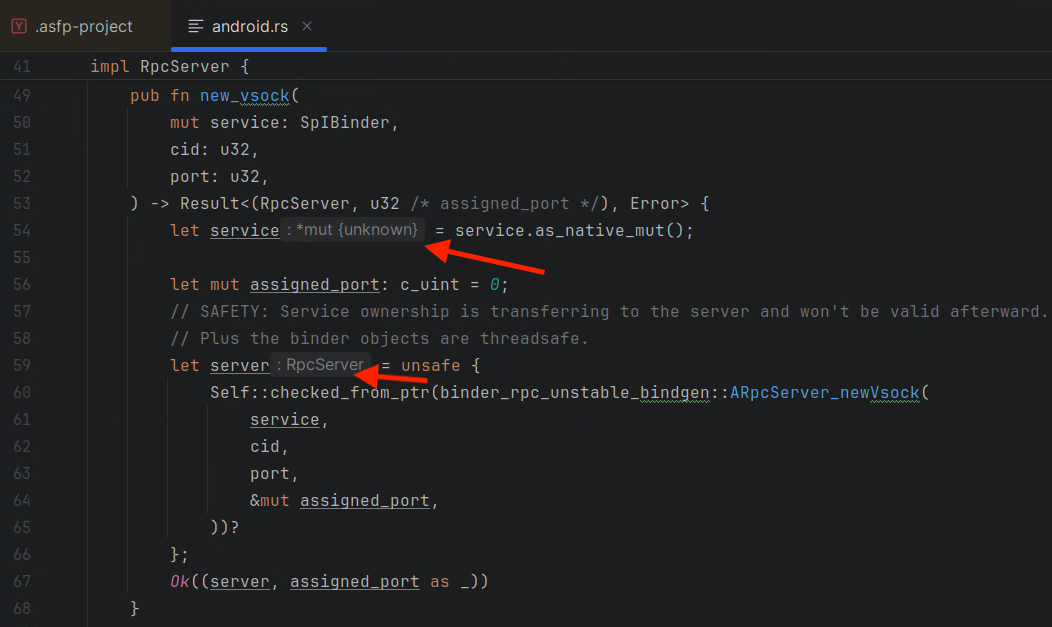
Wskazówki wstawiane, które wyświetlają informacje o typie w kodzie. Widok struktury: przeglądaj strukturę plików Rust za pomocą okna narzędziowego Struktura (Widok > Okna narzędziowe > Struktura).

Okno narzędzia struktury pokazujące konspekt pliku Rust. Refaktoryzacja: bezpieczne zmienianie nazw symboli i aktualizowanie wszystkich miejsc ich użycia.
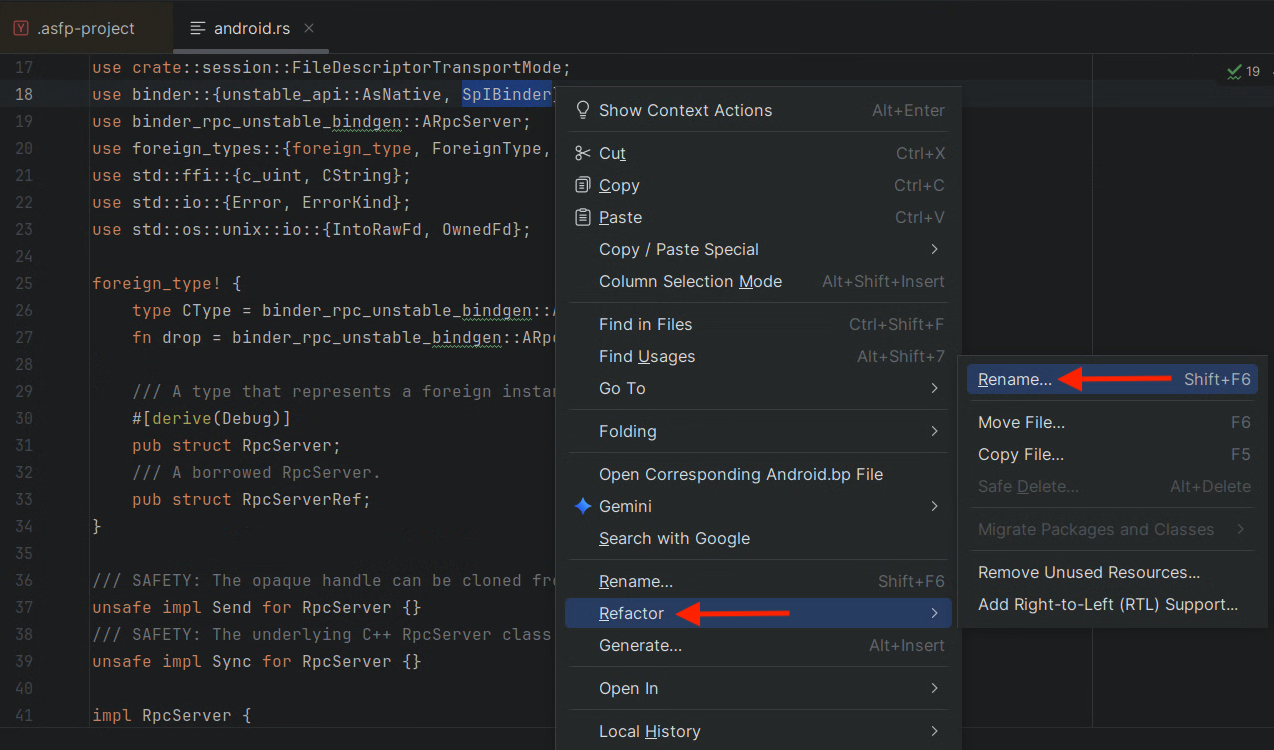
Zmiana nazwy symbolu w języku Rust i aktualizacja wszystkich jego odwołań. Analiza w czasie rzeczywistym: otrzymuj natychmiastowe informacje o błędach i ostrzeżeniach w kodzie Rust.
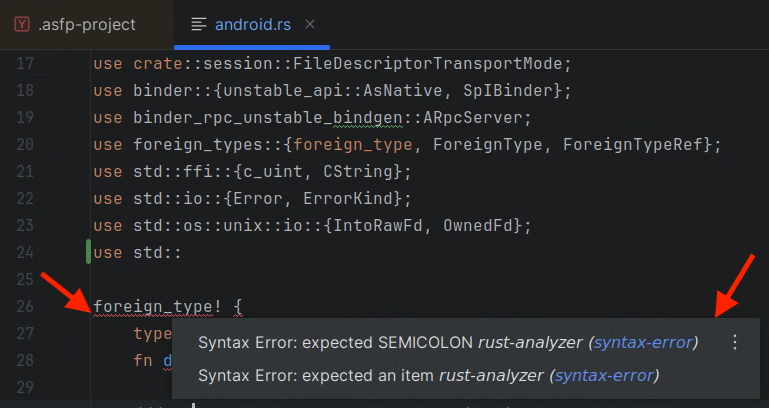
IDE showing real-time errors and warnings in Rust code.

